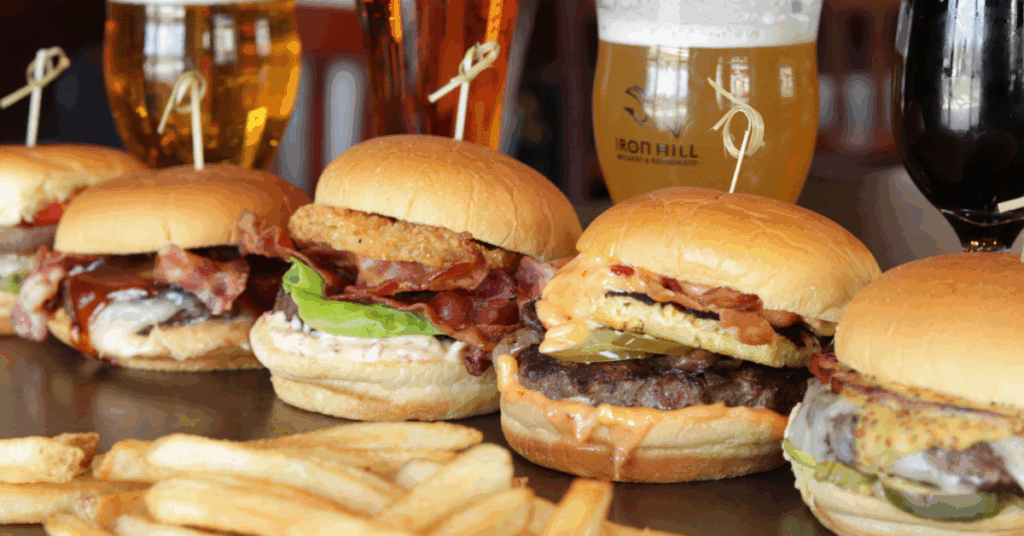Explore More
Limited-Time Restaurant Offers Drive Customer Loyalty and Revenue Growth
Restaurant marketing shifts with rising LTO popularity. Explore how limited-time offers drive revenue growth and consumer interest.

Limited-time offers are reshaping restaurant marketing strategies in 2024, as operators from fast casual to full service chase consumer interest with time-bound promotions. With menu fatigue setting in for many diners and food costs running high, the food service sector is turning to creative limited-time options to maintain footfall and unlock new sources of revenue. Limited-time offers (LTOs) across the industry have risen 53% over the last four years, according to Technomic data, becoming a proven lever for engaging returning and new customers alike.
This shift in strategy reflects both the pressures and opportunities facing restaurants as they seek more precise, performance-driven tools to drive profitable growth. Analysts note that 52% of consumers weigh attractive LTOs heavily when choosing which restaurant to visit, giving operators who can execute these campaigns well a measurable advantage. For brands willing to embed creativity and relevance in their calendar, the rewards extend beyond sales spikes – fostering long-term guest loyalty and repeat visits that can compound over time.
Surging Popularity of Limited-Time Offers
The appeal of limited-time events is not lost on the industry’s fastest-growing operators. Recent research shows that 91% of consumers are more likely to visit establishments featuring new or unique menu items, underscoring a growing appetite for novelty and perceived value (Food Institute report). LTOs have become a crucial weapon in the competitive food service marketplace, especially as customers increasingly scrutinise their spending under inflationary pressures. Operators are responding with an unprecedented number of campaigns, aiming to capture incremental purchases and create memorable experiences that set their brands apart.
Iron Hill Brewery & Restaurant, for example, has launched its 17th annual Burger Month, delivering a fresh, themed burger and beer pairing every day in May for a bundled price of $20. Each offer is available at all locations, encouraging repeat visits and tapping into event-based occasions—from baseball’s opening day to Mother’s Day and Memorial Day. The event’s structure, with chef-developed burgers and timely tie-ins, reflects a broader trend of balancing cost discipline with strategic risk-taking in menu development (Bikky menu analysis insights).
Revenue Diversification and Measurable ROI
Industry leaders increasingly view LTOs as profit engines. According to Dennis Foodservice research, 61% of restaurant operators identify LTOs as centres of profit, often reporting significant traffic and revenue gains during well-executed promotional periods. New research published by Kerry underscores this, indicating that 64% of consumers will purchase LTO items during visits when they otherwise might not have bought anything (Kerry Digest research).
Competitors across the sector are rolling out aggressive LTO schedules of their own. However, results vary. Burger King’s recent seasonal LTOs struggled amid a “cluttered value message” environment, underlining the importance of tactical clarity and market differentiation (Restaurant Dive report). Brands willing to tightly align their LTOs with consumer interests and calendar moments have a higher chance of maximising both short-term sales and sustainable guest loyalty.
Strategic Menu Development: From Event-Based Bundles to Fan Engagement
Limited-time campaigns now extend past basic menu swaps. Sophisticated bundling—such as Iron Hill’s burger-and-beer offerings—encourages higher spend per visit and delivers perceived value without heavy discounting. Additionally, leveraging fan engagement through social media, as seen with Iron Hill’s Crowdsourced Burger Challenge, aligns the restaurant’s tactical promotions with broader marketing aims, including customer loyalty and community-building.
As Technomic’s recent analysis notes, bundling LTOs with value-driven price points and clear event hooks positions operators to offset rising costs without sacrificing experience. Flexible supply chains and decentralised menu development—for example, allowing chefs leeway to create themed items—promote agility and play a vital role in capitalising on evolving tastes (industry overview).
Competitive Pressures and the Path to Long-Term Value
While some fast-casual players have faced growth headwinds despite LTO experimentation due to weak market differentiation or operational complexity, the overarching trend indicates that multi-location brands with strong execution continue to realise tangible returns (industry case studies). Long-running events, like Iron Hill’s Burger Month, provide a blueprint for sustaining excitement, deepening guest relationships, and cycling innovation through limited periods without permanent menu dilution.
The future of restaurant-driven LTOs lies in measured creativity, operational discipline, and data-driven insight into consumer preferences. As operators look ahead, the most successful will harness these time-bound campaigns to optimise performance, differentiate their brand, and generate lasting wealth through increased frequency, check averages, and guest lifetime value.



